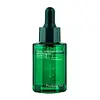What's inside
What's inside
 Key Ingredients
Key Ingredients

 Benefits
Benefits

 Concerns
Concerns

No concerns
 Ingredients Side-by-side
Ingredients Side-by-side

Water
Skin ConditioningGlycerin
HumectantMethylpropanediol
SolventPhellodendron Amurense Bark Extract
Skin ConditioningPaeonia Lactiflora Bark/Sap Extract
Skin ConditioningScutellaria Baicalensis Root Extract
AstringentMentha Arvensis Extract
MaskingButylene Glycol
HumectantDipropylene Glycol
HumectantBetaine
HumectantHydroxyacetophenone
AntioxidantAcrylates/C10-30 Alkyl Acrylate Crosspolymer
Emulsion StabilisingArginine
Masking1,2-Hexanediol
Skin ConditioningXanthan Gum
EmulsifyingCitric Acid
BufferingPEG-60 Hydrogenated Castor Oil
EmulsifyingEthylhexylglycerin
Skin ConditioningCitrus Aurantium Dulcis Peel Oil
MaskingCitrus Aurantium Bergamia Fruit Oil
MaskingPelargonium Graveolens Oil
MaskingAllantoin
Skin ConditioningGluconolactone
Skin ConditioningMentha Piperita Oil
MaskingSqualane
EmollientButyrospermum Parkii Butter
Skin ConditioningLonicera Japonica Flower Extract
Skin ConditioningCaprylic/Capric Triglyceride
MaskingCeramide NP
Skin ConditioningAdansonia Digitata Seed Oil
EmollientHydrogenated Lecithin
EmulsifyingPentylene Glycol
Skin ConditioningMelaleuca Alternifolia Leaf Extract
PerfumingSodium Hyaluronate
HumectantTocopherol
AntioxidantCaprylyl Glycol
EmollientSodium Hyaluronate Crosspolymer
HumectantCeramide Ns
Skin ConditioningCeramide As
Skin ConditioningHydrolyzed Hyaluronic Acid
HumectantCentella Asiatica Extract
CleansingCeramide EOP
Skin ConditioningCeramide AP
Skin ConditioningHyaluronic Acid
HumectantHydrolyzed Sodium Hyaluronate
Skin ConditioningMadecassoside
AntioxidantMadecassic Acid
Skin ConditioningAsiaticoside
AntioxidantAsiatic Acid
Skin ConditioningLimonene
PerfumingCitronellol
PerfumingLinalool
PerfumingGeraniol
PerfumingWater, Glycerin, Methylpropanediol, Phellodendron Amurense Bark Extract, Paeonia Lactiflora Bark/Sap Extract, Scutellaria Baicalensis Root Extract, Mentha Arvensis Extract, Butylene Glycol, Dipropylene Glycol, Betaine, Hydroxyacetophenone, Acrylates/C10-30 Alkyl Acrylate Crosspolymer, Arginine, 1,2-Hexanediol, Xanthan Gum, Citric Acid, PEG-60 Hydrogenated Castor Oil, Ethylhexylglycerin, Citrus Aurantium Dulcis Peel Oil, Citrus Aurantium Bergamia Fruit Oil, Pelargonium Graveolens Oil, Allantoin, Gluconolactone, Mentha Piperita Oil, Squalane, Butyrospermum Parkii Butter, Lonicera Japonica Flower Extract, Caprylic/Capric Triglyceride, Ceramide NP, Adansonia Digitata Seed Oil, Hydrogenated Lecithin, Pentylene Glycol, Melaleuca Alternifolia Leaf Extract, Sodium Hyaluronate, Tocopherol, Caprylyl Glycol, Sodium Hyaluronate Crosspolymer, Ceramide Ns, Ceramide As, Hydrolyzed Hyaluronic Acid, Centella Asiatica Extract, Ceramide EOP, Ceramide AP, Hyaluronic Acid, Hydrolyzed Sodium Hyaluronate, Madecassoside, Madecassic Acid, Asiaticoside, Asiatic Acid, Limonene, Citronellol, Linalool, Geraniol
Water
Skin ConditioningDimethyl Isosorbide
SolventCamellia Sinensis Leaf Extract
AntimicrobialMaltodextrin
AbsorbentButylene Glycol
HumectantPalmitoyl Tetrapeptide-7
Skin ConditioningPalmitoyl Tripeptide-1
Skin ConditioningPEG-40 Hydrogenated Castor Oil
EmulsifyingCaffeine
Skin ConditioningGluconolactone
Skin ConditioningSodium Benzoate
MaskingSodium Hyaluronate
HumectantAndrographis Paniculata Leaf Extract
AstringentPropanediol
SolventNiacinamide
SmoothingSodium Gluconate
Skin ConditioningCitric Acid
BufferingAcetyl Hexapeptide-8
HumectantWater, Dimethyl Isosorbide, Camellia Sinensis Leaf Extract, Maltodextrin, Butylene Glycol, Palmitoyl Tetrapeptide-7, Palmitoyl Tripeptide-1, PEG-40 Hydrogenated Castor Oil, Caffeine, Gluconolactone, Sodium Benzoate, Sodium Hyaluronate, Andrographis Paniculata Leaf Extract, Propanediol, Niacinamide, Sodium Gluconate, Citric Acid, Acetyl Hexapeptide-8
 Reviews
Reviews

Ingredients Explained
These ingredients are found in both products.
Ingredients higher up in an ingredient list are typically present in a larger amount.
Butylene Glycol (or BG) is used within cosmetic products for a few different reasons:
Overall, Butylene Glycol is a safe and well-rounded ingredient that works well with other ingredients.
Though this ingredient works well with most skin types, some people with sensitive skin may experience a reaction such as allergic rashes, closed comedones, or itchiness.
Learn more about Butylene GlycolCitric Acid is an alpha hydroxy acid (AHA) naturally found in citrus fruits like oranges, lemons, and limes.
Like other AHAs, citric acid can exfoliate skin by breaking down the bonds that hold dead skin cells together. This helps reveal smoother and brighter skin underneath.
However, this exfoliating effect only happens at high concentrations (20%) which can be hard to find in cosmetic products.
Due to this, citric acid is usually included in small amounts as a pH adjuster. This helps keep products slightly more acidic and compatible with skin's natural pH.
In skincare formulas, citric acid can:
While it can provide some skin benefits, research shows lactic acid and glycolic acid are generally more effective and less irritating exfoliants.
Most citric acid used in skincare today is made by fermenting sugars (usually from molasses). This synthetic version is identical to the natural citrus form but easier to stabilize and use in formulations.
Read more about some other popular AHA's here:
Learn more about Citric AcidGluconolactone is a PHA. PHAs are a great gentle alternative to traditional AHAs.
When applied, Gluconolactone has the same affect on skin as AHAs such as lactic acid. It helps dissolve the dead skin cells in the top layer of your skin. This improves texture and brightens the skin.
PHAs are more gentle than AHAs due to their larger structure. They do not penetrate as deeply as AHAs and take a longer time to dissolve dead cells. Studies show PHAs do not cause as much irritation.
Gluconolactone has some interesting properties:
In a 2004 study, Gluconolactone was found to prevent UV damage in mouse skin cells and has not been found to increase sun sensitivity. However, we still recommend wearing SPF daily.
This ingredient is is an created by reacting gluconic acid with an alcohol.
Learn more about GluconolactoneSodium Hyaluronate is hyaluronic acid's salt form. It is commonly derived from the sodium salt of hyaluronic acid.
Like hyaluronic acid, it is great at holding water and acts as a humectant. This makes it a great skin hydrating ingredient.
Sodium Hyaluronate is naturally occurring in our bodies and is mostly found in eye fluid and joints.
These are some other common types of Hyaluronic Acid:
Learn more about Sodium HyaluronateWater. It's the most common cosmetic ingredient of all. You'll usually see it at the top of ingredient lists, meaning that it makes up the largest part of the product.
So why is it so popular? Water most often acts as a solvent - this means that it helps dissolve other ingredients into the formulation.
You'll also recognize water as that liquid we all need to stay alive. If you see this, drink a glass of water. Stay hydrated!
Learn more about Water